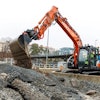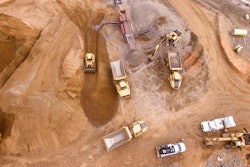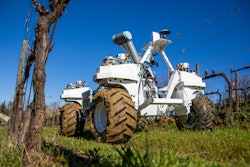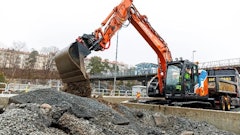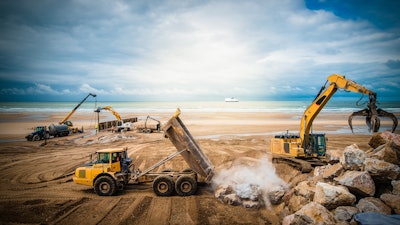
When the coronavirus arrived late last year, it profoundly affected most industries, geographies and populations. It has forced most of us to evaluate our established norms and to make changes moving forward.
For equipment and vehicle OEMs, powertrain providers and other component suppliers, surviving the current situation and emerging stronger than before this crisis will require new thinking and strategies.
The speed and flexibility in adopting new standards and operations differentiate winners from losers.
The COVID-19 global pandemic has made this year very challenging across most industries. This includes the production of agricultural (AG) machinery, construction equipment and industrial products in North America. The off-highway segments (agricultural, construction and industrial) are all seeing dramatic production declines in 2020 compared to 2019.
Demand for products in most markets and regions has been weak and will not return to normal in the short term; we have already witnessed this during Q2 2020. This is especially true even for the industries that suffered the least impact in supply chain disruption and manufacturing shutdowns.
February 2020 marked the end of the longest economic expansion in U.S. history, a stretch of 10 years and 8 months, according to the National Bureau for Economic Research. The U.S. economy was due for a slowdown, but the pandemic dramatically sped up the end of the current cycle.
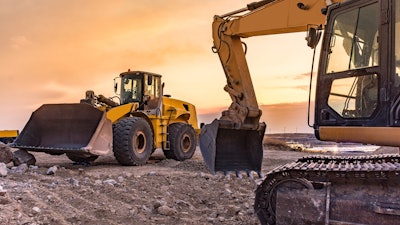 North American construction equipment production is projected to be down 14.2% in 2020.©Enrique del Barrio – stock.adobe.com
North American construction equipment production is projected to be down 14.2% in 2020.©Enrique del Barrio – stock.adobe.com
Agricultural machinery
The last few years have been challenging for the agricultural and farming industry in North America. It suffered multiple setbacks in 2019, driven by weather, low commodity rates and trade disputes. Power Systems Research’s latest numbers indicate that the agricultural machinery market declined 3.7% in 2019 versus 2018, and we had forecast a recovery to start in 2020.
However, that projected recovery has been postponed and put on hold again, due to the slumping world economy caused by COVID-19.
Currently, we expect the AG segment to follow other industrial and heavy equipment industries. In 2020, we project a decline of 12.5% when compared to 2019. A small recovery is projected for 2021 at 4.4%.
The segment decline rate in 2020 is low double digits, based mainly on already low-level production that took place during 2016-2019. Thus, we will not see 25-30% declines in the AG sector as we witnessed in other market segments. We expect that further changes are due to supply chain channels and ultimate rebalancing of market shares among industry players. The recovery will be slow and steady, but we expect levels of production in 2022 to reach those of 2016-2017.
 Recovery for the agricultural equipment market will be slow and steady over the next few years.©Dusan Kostic – stock.adobe.com
Recovery for the agricultural equipment market will be slow and steady over the next few years.©Dusan Kostic – stock.adobe.com
Construction equipment
The construction equipment market in North America has been riding a strong economy over the past few years. The segment was due for a slowdown; however, current worldwide economic conditions have caused a rapid cycle to reset in the construction industry. Government is committed to support the demand in the sector by investing heavily into infrastructure. We have yet to see any new level of demand, but we expect to see signs of the new normal in the second half of 2020 and early 2021.
Many of the future infrastructure bills moved to the back burner in favor of help for small businesses. However, infrastructure is a silver lining in the pandemic for many states. With the lockdowns in place in most states during Q2 2020 and reduced vehicle traffic, crews continued their road work and were getting more work done than usual.
During the economic shut down, construction remained one relatively bright spot, since it was declared “essential” by federal and state officials. U.S. government officials signaled that they are looking to steer even more money to infrastructure projects to help the economy recover from the damage caused by the pandemic, but we have not seen any specific moves in this direction.
Supporters of spending on infrastructure and transportation believe this could help put people to work with dollars guaranteed to be spent inside the United States, while tackling a backlog in maintenance work that acts as a drag on the economy.
Our most recent North American construction equipment projection on production shows a decline of 14.2% in 2020 when compared to 2019 volumes. While forecasting a double-digit decline in 2020, we remain rather optimistic on the mid-term view (2021-2023). We expect the market segment to post a growth rate in 2021 of 4.2% when compared to 2020 and an additional increase of 6.5% in 2022.
Within our construction segment we track 20 product categories. The range for the declines on those products is from scrapers at -20% on the high side and motor graders on the low side at only -4%.
 Main drivers for the industrial segment include material handling and forklift applications, where the demand remains strong.JCB
Main drivers for the industrial segment include material handling and forklift applications, where the demand remains strong.JCB
Industrial products
The industrial market segment is quite fragmented and has products which range from forklifts to compressors and pumps. This segment typically follows general economic trends and the construction equipment industry, with some minor exceptions.
Currently, we expect an overall decline in production numbers at -12.1% for 2020 when compared to 2019 production levels. We are projecting 2021 production to increase around 4% over 2020. We are not expecting to see pre-COVID (2019) production levels again in North America until 2023.
As with most other sectors of the economy, we have yet to see new levels of demand be established. The second half of 2020 will be critical to understanding the negative impact on the demand for industrial products from the coronavirus and how we can expect to move forward. As stated previously with the agricultural and construction markets, we expect similar and new rebalancing of the distribution of market shares and supply chain norms.
The overall growth dynamic for the industrial products sector is closely mirroring that of the construction segment. The main drivers for the industrial segment are small construction equipment, material handling and forklift applications, where the demand remains strong.
Across all market segments, we expect overall total OEM equipment production numbers to be significantly down in 2020, with some segments varying considerably.
Currently, we do not see a return to significant economic activities and solid demand for products in most markets until early next year (2021). At this time, we forecast year 2021 to be in the low single digit positive range versus 2020, but future growth will depend on the pandemic spread from the second wave of the coronavirus and the overall speed of the recovery.
These markets will continue to evolve and adjust. The next few years will be very interesting to see how long recovery will take and what that will look like not only in North America but globally as well.
